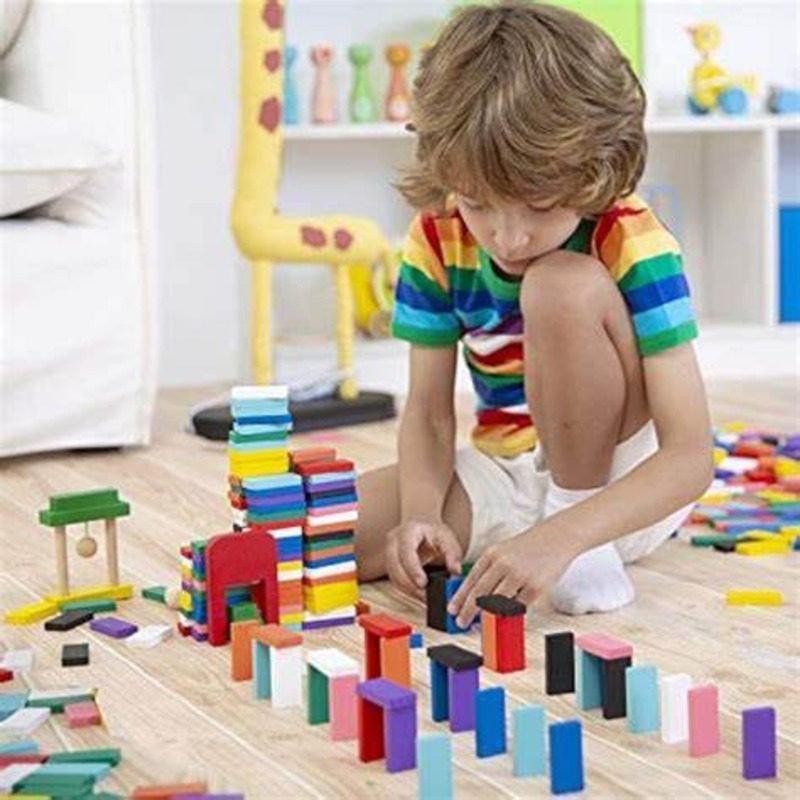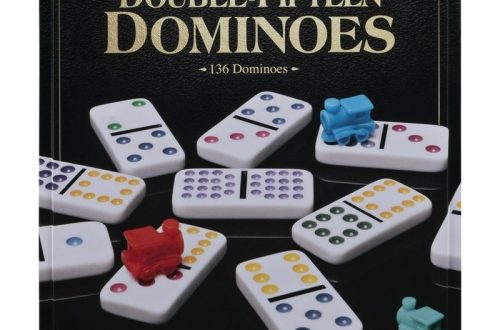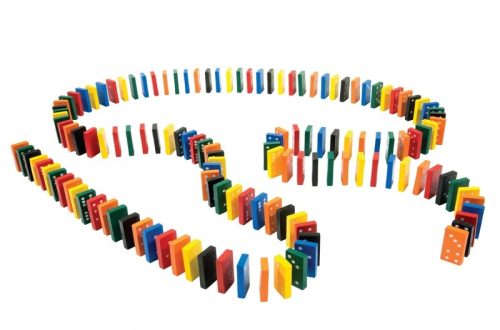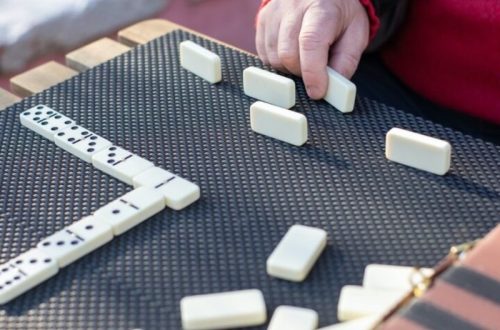The Benefits of Using Dominoes for Math Education
Using dominoes for kids’ math education brings many benefits. Dominoes are a hands-on learning tool. They make abstract math concepts tangible. Kids can touch and move the pieces. This helps them understand operations like addition and subtraction better.
Visual learning is another benefit. Children see the numbers and patterns on the dominoes. They begin to recognize number sequences more quickly. This builds a strong foundation for number sense.
Dominoes encourage active participation. Unlike worksheets, domino games require engagement. Kids stay interested and learn while they play. This improves their focus and memory retention. It turns math into a fun challenge rather than a chore.
Collaboration is yet another advantage when using dominoes for kids. They learn to play and solve problems with others. This fosters social skills along with math skills. They learn to take turns, share strategies, and work as a team.
Moreover, dominoes offer a diverse range of difficulty levels. They support children from basic counting to more complex math problems. As kids grow, domino games advance with them. They can start with simple matching and move up to games that require strategic thinking.
Finally, dominoes are affordable and widely available. Schools and parents can incorporate them into learning without significant cost. They are durable and can be used over and over again. Investing in a set of dominoes for kids gives them a tool that will support their math education for years to come.
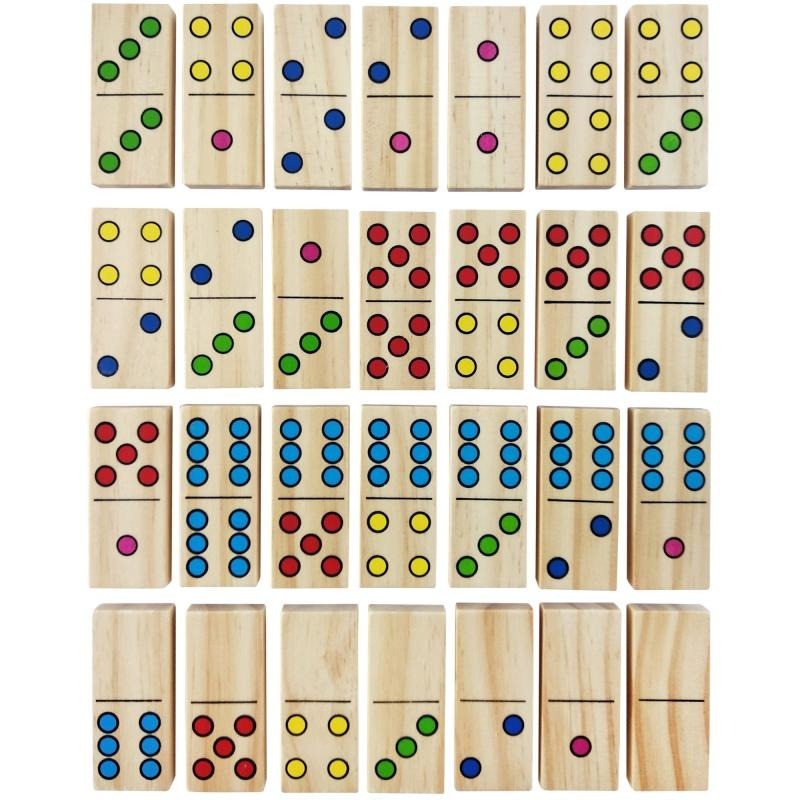
How to Introduce Dominoes to Young Learners
Introducing dominoes to young learners should be exciting and easy. Here’s how you can get started:
- Begin with the Basics: Introduce dominoes by showing the different pieces. Let kids touch and feel them. Explain the dots represent numbers.
- Play Match-Making: Start with a simple game. Ask kids to match sides with the same number of dots. This teaches recognition.
- Use Clear Language: Keep instructions simple. Use words like ‘match’, ‘count’, and ‘add’ often. Repeat them to build vocabulary.
- Create Stories: Turn each activity into a story. Maybe domino pieces are treasure that need matching. Stories keep learning fun.
- Set Up Challenges: Pose simple challenges. Like, who can make the longest trail of matching dominoes?
- Celebrate Efforts: Praise kids for trying, not just for getting it right. Cheer every effort to encourage engagement.
- Include Visual Aids: Use colorful posters or charts with numbers and dominoes. Visual aids help in understanding.
- Encourage Exploration: Let kids play freely with the dominoes. Exploration leads to better learning. They can stack, line up, or group dominoes.
By following these steps, you can use dominoes for kids to set the stage for fun and effective math learning.
Simple Domino Games to Teach Basic Math Concepts
Simple domino games can powerfully introduce basic math concepts to children. These games blend fun with education, keeping kids engaged and interested. Here’s how to use domino games effectively for teaching fundamental math skills:
- Domino Addition: Set up a game where each player picks two dominoes and adds up the dots. The player with the highest sum wins the round. This game improves addition skills.
- Domino Subtraction: Similar to addition, but instead, players must subtract the smaller number from the larger one on their dominoes. This builds understanding of subtraction.
- Counting Challenge: Challenge kids to count the total number of dots across all dominoes in play. This reinforces counting skills and number recognition.
- Pattern Play: Encourage children to line up dominoes in patterns based on the number of dots. Patterns can be simple sequences or more complex ones for older kids. This promotes pattern recognition.
- Comparing Numbers: Teach kids how to compare numbers with dominoes. Ask them to place two dominoes side by side and decide which has more or fewer dots, which helps children grasp the concept of comparison.
Through these simple yet effective games, children can learn and understand basic math concepts with ease. Remember to use ‘dominoes for kids’ as a key element to developing their foundational math skills in a playful and dynamic manner.
Encouraging Strategic Thinking through Advanced Domino Math Activities
As children grow, their math skills need to progress beyond basics. Advanced domino math activities can foster strategic thinking. These activities challenge kids to use logic and higher-order thinking skills. Here are some ways to incorporate advanced domino math into learning:
- Domino Fractions: Have children group dominoes to represent fractions. They could show halves, thirds, or quarters. This activity introduces the concept of fractions in a practical way.
- Create Domino Stories: Encourage kids to create stories that involve complex math operations with their dominoes. For example, they could tell a story that requires multiplying the dots.
- Advanced Pattern Recognition: Set up sequences that involve more than just ascending or descending order of numbers. Include patterns that use skip counting or even and odd number sorting with dominoes.
- Dominoes Probability Games: Teach kids about probability by predicting which dominoes will fall next in a sequence. This is a playful approach to a complex math topic.
- Strategic Domino Puzzles: Design puzzles that require solving math problems with dominoes. For instance, setting up a series of dominoes that must add up to a certain number before knocking them down.
- Time-Based Challenges: Encourage quick thinking by setting time limits for certain domino games. This helps kids learn to think and solve problems more quickly.
These activities help children apply their math knowledge in new ways. They develop critical and strategic thinking skills. This is essential for their continued growth in math proficiency. Remember, by using ‘dominoes for kids’, you turn complex math concepts into exciting challenges.
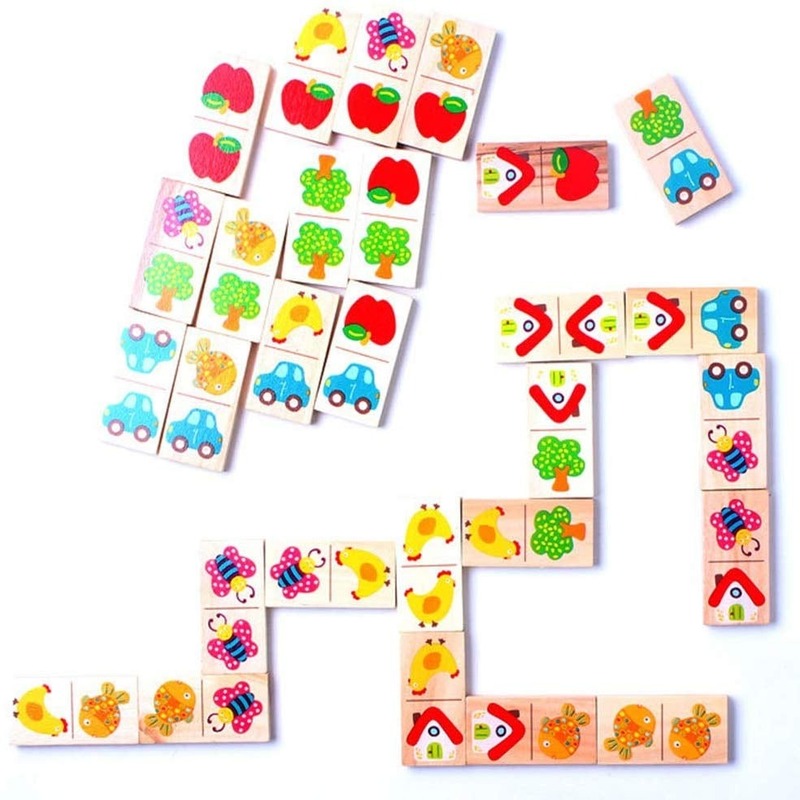
Adapting Domino Games for Different Age Groups
Dominoes for kids are adaptable for various age groups. It is essential to adjust the complexity of games to match the developmental stage of the children playing. Here are some tailored suggestions for different age groups:
- Toddlers (Ages 2-3): Use dominoes to help toddlers identify numbers. A game of ‘find the number’ with domino pieces can be quite effective. Encourage them to find and pick out dominoes with a specific number of dots.
- Preschoolers (Ages 4-5): Focus on simple pattern creation and basic matching. Have kids arrange dominoes in a line with matching numbers. This reinforces counting and recognition skills.
- Early Elementary (Ages 6-8): Introduce games that involve simple addition and subtraction. Create a ‘domino parking lot’ where kids park dominoes in spaces that add up to a certain number.
- Upper Elementary (Ages 9-10): At this stage, introduce fraction games and more complex patterns. Try a game where children group dominoes into equal parts to demonstrate fractions.
- Middle Schoolers (Ages 11-13): Challenge them with games that focus on probability and strategy. For example, kids can predict the next domino in a sequence to learn about probability and outcomes.
By modifying domino games to be age-appropriate, children remain engaged and challenged at their level. Teachers and parents should choose activities that balance learning and fun for the best results.
Fun Domino Exercises to Improve Mental Arithmetic Skills
To enhance mental arithmetic skills, dominoes for kids can be a practical resource. Here are some fun exercises:
- Rapid Domino Addition: Have children race to add up the dots on a set of dominoes. This boosts quick addition.
- Subtraction Speed: Set a timer and challenge kids to subtract the dots between pairs of dominoes. This sharpens subtraction abilities.
- Multiplication Match-up: Pair dominoes where one side’s dot count is a multiple of the other. This introduces multiplication.
- Division Drills: Use dominoes to divide one side’s dots by the other’s. Start with easy numbers, like dividing by two.
- Number Bonds: Dominoes with a total sum that equals a specific number can teach kids about number bonds.
- Memory Games: Place dominoes face down and have students flip two at a time, adding up the dots from memory.
Through these engaging exercises, kids practice math without the tedium of paper and pencil drills. This makes learning enjoyable and helps cement math concepts in young minds. Each activity can be adjusted for difficulty, ensuring that all children, regardless of their skill level, can take part and benefit from these mental math exercises.
Integrating Dominoes with Other Subjects for a Holistic Learning Experience
Dominoes for kids are not just for math. They can enhance other learning areas. By integrating dominoes across subjects, a holistic educational experience emerges. Here are ways to make this happen:
- Language and Literacy: Use dominoes to build word patterns. Kids can match dominoes with the same starting or ending sounds. This promotes phonemic awareness.
- Science: Teach basic science concepts like cause and effect. Set up domino runs to demonstrate a chain reaction. This provides a visual representation of scientific principles.
- Art: Encourage kids to design their own domino pieces. This sparks creativity. Children can explore patterns and colors while creating unique sets.
- Social Studies: Create historical timelines with dominoes. Each domino represents a historical event. Lining them up gives kids a visual sense of time.
- Physical Education: Include dominoes in active play. Set up courses where kids balance dominoes while moving. This develops fine motor skills and coordination.
By mixing dominoes into different subjects, kids stay engaged. They also see connections between disciplines. This approach makes learning more dynamic and memorable. Teachers and parents should explore these creative uses of dominoes. It helps children see the joy in all types of learning.
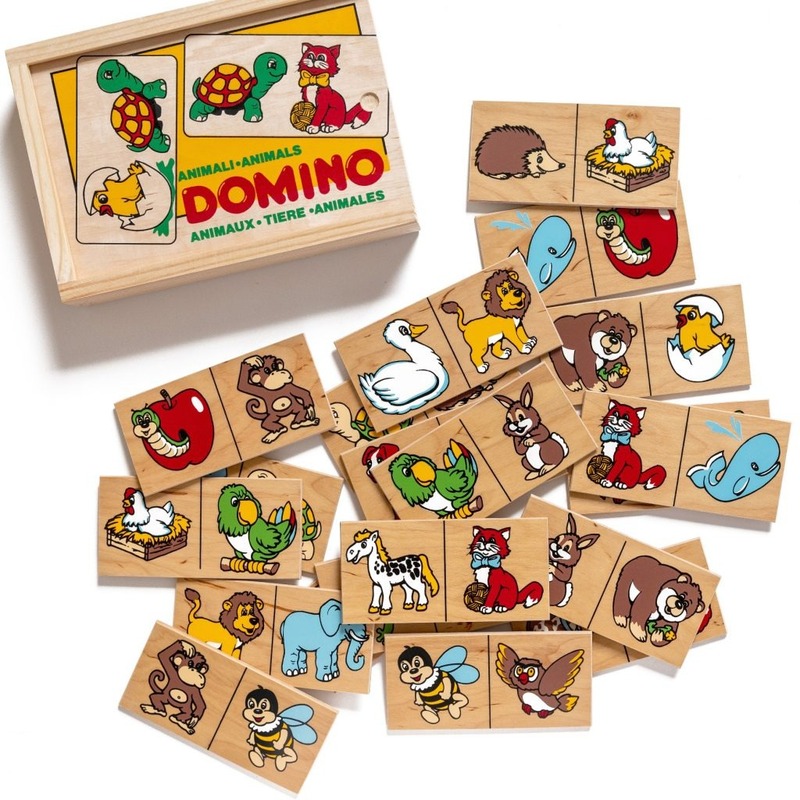
Best Practices for Parents and Educators Using Dominoes as a Teaching Tool
When using dominoes for kids as a teaching tool, consider these best practices to maximize learning effectiveness:
- Start Simple: Introduce dominoes with basic games. Build from there as children improve.
- Set Clear Goals: Define what each domino game teaches. Focus on one concept at a time.
- Be Patient: Allow kids time to explore and understand dominoes. Avoid rushing lessons.
- Encourage Questions: Invite kids to ask about dominoes and the math behind them. Answer clearly.
- Use Positive Reinforcement: Praise achievements. This boosts confidence and willingness to learn.
- Play Regularly: Include domino games in regular learning. Practice reinforces math skills.
- Mix It Up: Change game types often. This keeps learning fresh and engaging for kids.
- Involve Peers: Encourage group play. Kids learn from each other and develop social skills.
- Create a Game Library: Have a variety of domino games on hand. Match games to learning levels.
- Reflect on Outcomes: After play, discuss what was learned. This helps kids process their learning.
With these practices, dominoes become a valuable resource for teaching and learning math concepts. Keep sessions fun and interactive, and children will grow their skills while enjoying the process.
